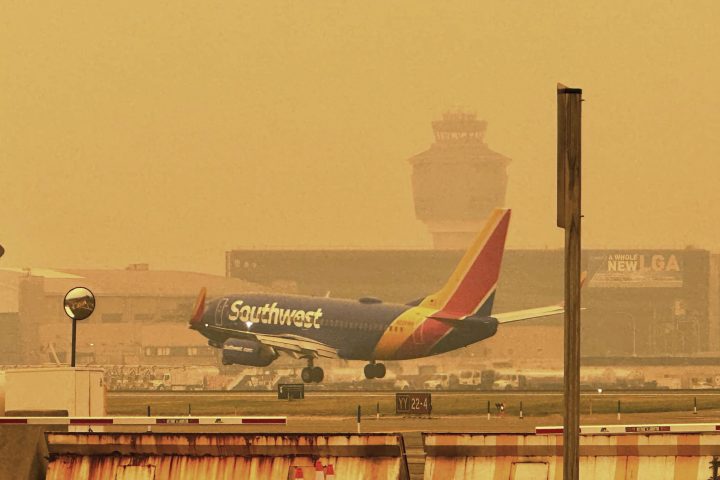Transport Canada is “closely monitoring” the wildfire situation and its impact on air travel as smoke from the country’s blazing forest fires has already disrupted flights in the United States.

Smoke spreading from wildfires in Canada delayed hundreds of flights Thursday at New York’s LaGuardia Airport, New Jersey’s Newark Liberty International Airport and Philadelphia International Airport because of limited visibility.
The U.S. Federal Aviation Administration (FAA) said in an update on Twitter Thursday that it will likely need to take steps to manage the flow of air traffic into Washington, D.C., and Charlotte, N.C., as well.
And as the winds shift, federal aviation officials are warning smoky skies could be seen in the U.S. Midwest and as far as the southeast.
In Canada, so far, there have been no major reported impacts to commercial aviation operations due to the wildfires, but several Notices to Airmen (NOTAM) have been issued across the country, a spokesperson at Transport Canada told Global News Friday.
“In all circumstances, air operators and travellers should exercise caution around fires,” said Hicham Ayoun.
“We urge everyone to follow the directions from local law enforcement and do not attempt to drive, fly or navigate through a wildfire.”

Some Air Canada flights to New York were adjusted after the FAA delays, the airline told Global News.

Get daily National news
Wildfire smoke leads to visibility issues which is why flight delays happen, said Samuel Ausby, FAA’s national traffic management officer.
“As the aircraft travel to the airports, they are unable to see the runways and taxiways as early as they would have on a clear day,” he explained in a video posted on FAA’s official Twitter account.
Pilots use radar, radio navigation systems and other technologies to supplement their visuals, but they want to make sure they can see safe distances, said John Gradek, faculty lecturer and coordinator of McGill University’s aviation management program.
However, besides decreased visibility and the smell of fire for those onboard, there is no actual risk to the operations of the aircraft from wildfires, Gradek said.
“The particulate matter that’s in the air from wildfires is small enough that it’s not going to affect the operating of the aircraft in any way, shape or form,” he told Global News in an interview.
Wildfire smoke causes more flight delays than rain or fog, according to FAA spokesman Kevin Morris.
“When aircraft need to land during periods of poor visibility, they rely on advanced navigation systems both onboard the aircraft and on the ground,” he said in a Twitter video.
“These systems work well through water droplets but can be less effective through solid particles such as smoke and ash,” Morris explained.
This is why air traffic controllers and pilots need to take additional safety precautions, which could mean greater distances between arriving and departing airplanes as well as limiting the types of aircraft that can land based on their navigation equipment, he added.
“Additionally, because smoke can linger much longer than fog or rain, the FAA may slow traffic to keep the airspace safe.”
Beyond flight complications, the smokey air has hampered businesses and shut down outdoor recreation programs in many cities in Ontario.
On Friday, Environment Canada said that air quality is improving in southern Ontario and Quebec but smoky skies still linger elsewhere in the nation.









Comments